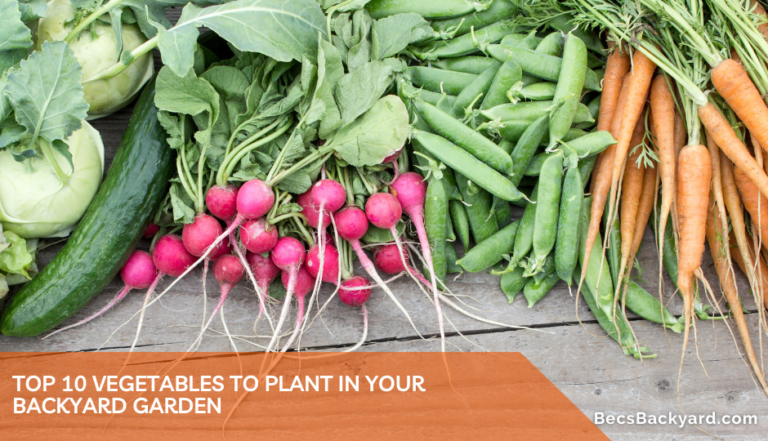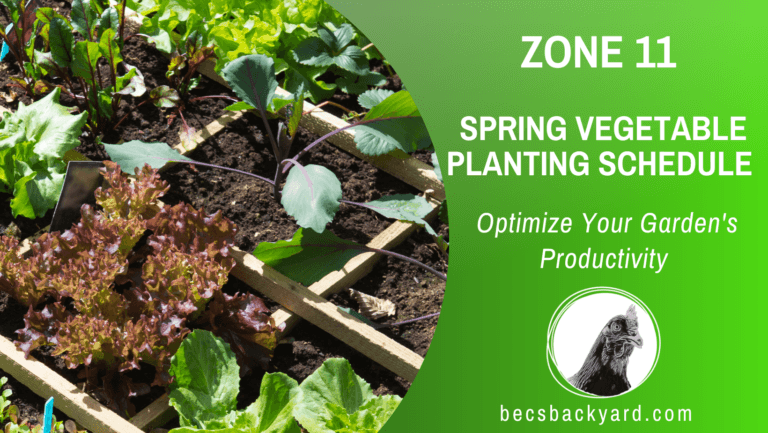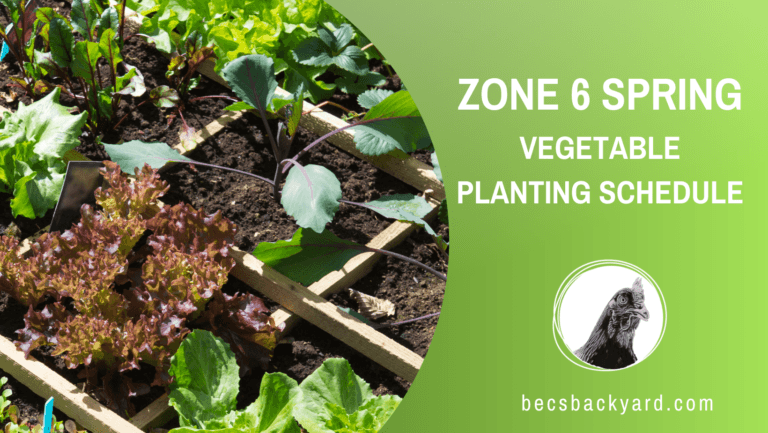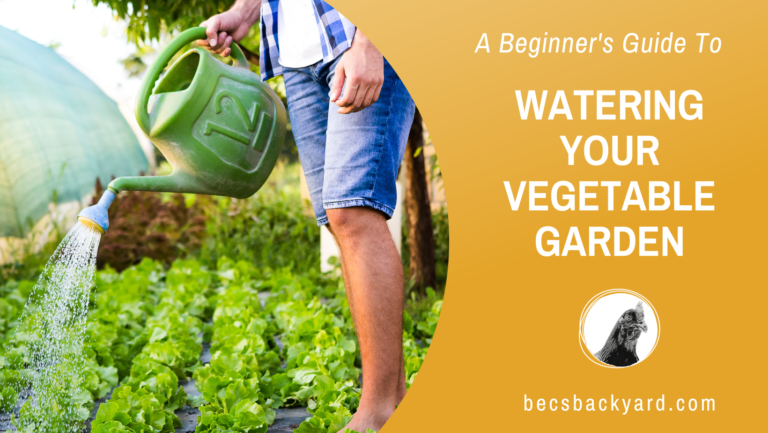Best Ways to Grow Vegetables in Winter: Tips and Tricks
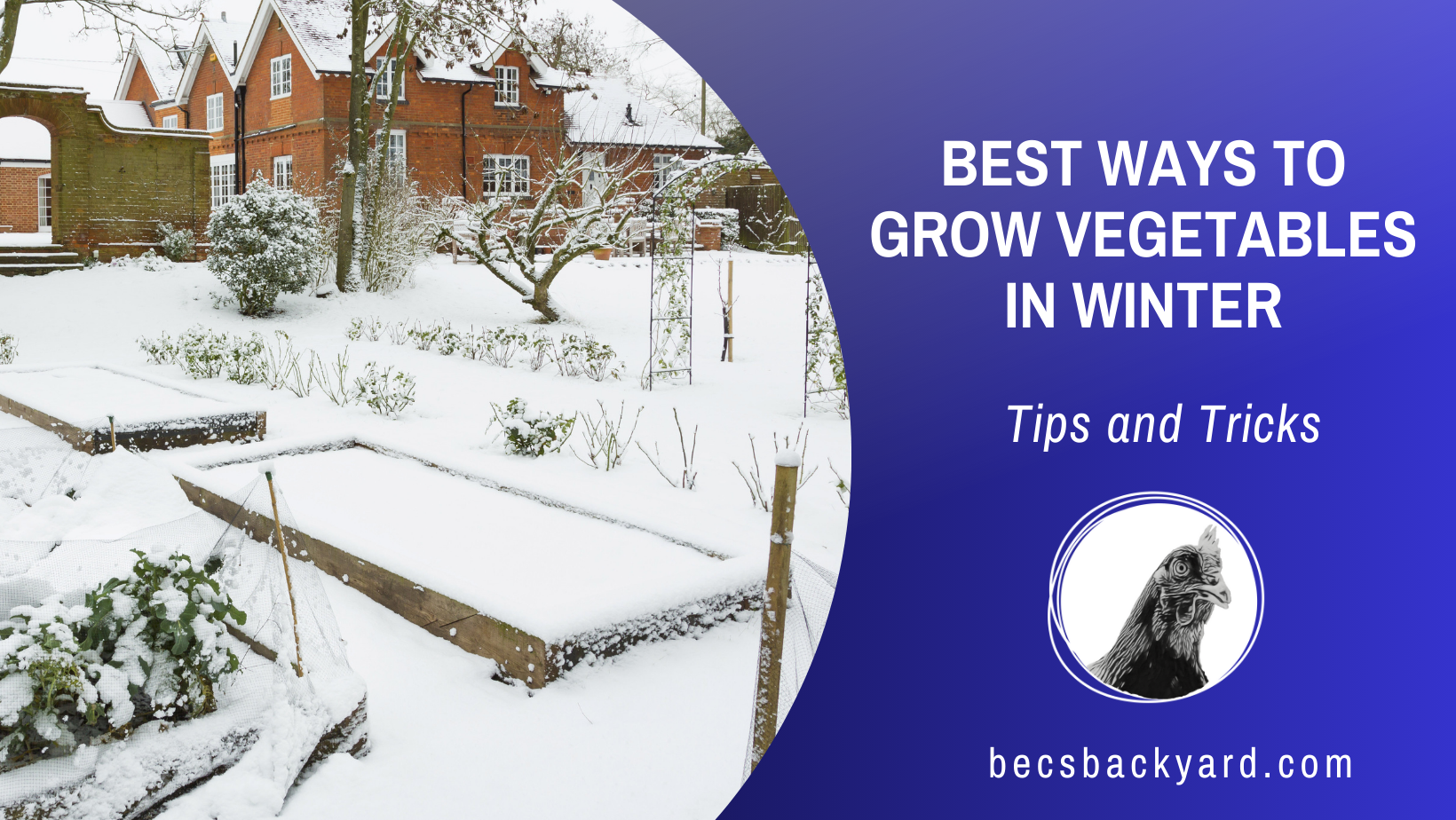
Are you tired of waiting for spring to start planting your favorite vegetables? Do you want to enjoy fresh, homegrown produce all year round? Growing vegetables in winter may seem like a daunting task, but with the right techniques and knowledge, it can be a rewarding and fulfilling experience.
One of the best ways to grow vegetables in winter is to choose cold-hardy varieties that can withstand low temperatures and frost. Leafy greens like spinach, kale, and arugula, as well as root vegetables like carrots, beets, and parsnips, are excellent choices for winter gardening. By planting these hardy varieties, you can enjoy fresh greens and root vegetables even in the coldest months of the year.
Another important factor to consider when growing vegetables in winter is providing them with adequate protection from the elements. This can be achieved through the use of row covers, cloches, or cold frames, which help to trap heat and protect plants from frost and wind. With the right combination of cold-hardy varieties and protective measures, you can successfully grow a wide range of vegetables in winter and enjoy fresh, homegrown produce all year round.
Understanding Winter Vegetables
If you’re looking to grow vegetables in winter, it’s important to understand the types of plants that thrive in colder temperatures. Winter vegetables are typically known as hardy, cold-hardy, or cool-season vegetables, and they are capable of withstanding frost and low temperatures.
Some common examples of winter vegetables include kale, spinach, arugula, endives, and parsley. These plants are known for their ability to survive in cold weather and even become sweeter after a frost.
When growing winter vegetables, it’s important to choose the right varieties that are suited for your climate. Consult with your local gardening center or extension office to determine which plants are best suited for your area.
It’s also important to consider the planting time for winter vegetables. Many hardy vegetables should be planted in late summer or early fall to allow them to establish before the colder temperatures arrive.
In addition, it’s important to provide proper care for winter vegetables. They require consistent watering and fertilization, and may also benefit from mulching to help regulate soil temperature.
Overall, growing winter vegetables can be a rewarding experience for any gardener. With the right knowledge and care, you can enjoy fresh, healthy produce even during the coldest months of the year.
Preparing Your Winter Garden
To have a successful winter vegetable garden, it is important to start preparing your garden in the fall. Here are some tips to help you get started:
Clear Out the Old Plants
Remove any dead or diseased plants, as well as any weeds, from your garden bed. This will help prevent the spread of disease and pests. You can either compost the old plants or dispose of them in the trash.
Amend the Soil
Adding organic material, such as compost or well-rotted manure, to your soil will help improve its fertility and structure. Spread a layer of organic material over your garden bed and work it into the soil using a garden fork or tiller.
Create a Seedbed
To get a head start on your winter garden, you can create a seedbed by preparing a small area of your garden bed for planting. This will allow you to start your seeds indoors and transplant them into the garden bed when they are ready.
Protect Your Garden
To protect your winter garden from the elements, consider using season extension methods such as low tunnels, cold frames, or cloches. You can also add a layer of mulch to your garden bed to help insulate the soil and protect your plants from frost.
By following these tips, you can help ensure a successful winter vegetable garden.
Grow Vegetables in Winter : Effective Planting Techniques
When it comes to planting vegetables in winter, there are a few techniques that can help ensure success. Whether you’re starting from seeds or transplanting seedlings, following these tips can help you get the most out of your winter garden.
Seed Trays and Pots
Starting your winter vegetables from seeds is a great way to save money and ensure that you’re growing the varieties you want. Seed trays and pots are a popular choice for starting seeds indoors. They allow you to control the environment and provide the perfect conditions for germination.
When using seed trays or pots, it’s important to choose a good quality soil mix that’s designed for seed starting. This will provide the nutrients and moisture your seeds need to grow strong and healthy. You should also make sure to label your trays or pots so you know what you’re growing.
Transplanting Seedlings
Transplanting seedlings is another popular way to start your winter garden. This involves starting your seeds indoors and then transplanting them into your garden once they’ve grown large enough.
When transplanting seedlings, it’s important to handle them carefully to avoid damaging the roots. You should also make sure to plant them at the right depth and water them well to help them establish in their new home.
Direct Seeding
Direct seeding is another option for planting your winter vegetables. This involves planting your seeds directly into your garden bed rather than starting them indoors first.
When direct seeding, it’s important to choose a location that gets plenty of sunlight and has good drainage. You should also make sure to plant your seeds at the right depth and water them well to help them germinate.
Transplanting
Transplanting is a technique that can be used for both seedlings and mature plants. This involves moving your plants from one location to another.
When transplanting, it’s important to choose a location that has the right conditions for your plants to thrive. You should also make sure to handle your plants carefully to avoid damaging the roots.
Overall, there are many effective planting techniques that can help you grow vegetables in winter. Whether you’re starting from seeds or transplanting seedlings, following these tips can help you get the most out of your winter garden.
Choosing the Right Vegetables
When it comes to growing vegetables in winter, it is important to choose the right ones that can thrive in colder temperatures. Here are some of the best vegetables to plant and grow in winter:
Leafy Greens
Leafy greens such as kale, spinach, and chard are perfect for winter gardening. They are cold-hardy and can withstand frost and snow. You can also grow lettuce and arugula in winter, but they may need some protection from the cold.
Root Vegetables
Root vegetables such as carrots, beets, parsnips, turnips, and radishes are also great for winter gardening. They can tolerate cold temperatures and even improve in flavor after a frost. Winter cabbage and onions are also good options.
Brassicas
Brassicas such as broccoli, Brussels sprouts, and cauliflower are cold-hardy and can thrive in winter. They may take longer to mature in colder temperatures, but they are worth the wait. You can also grow collards and collard greens in winter.
Herbs
Some herbs such as parsley and chives can survive in colder temperatures, but others like basil and cilantro will not. You can grow herbs indoors or in a greenhouse during winter.
Other Vegetables
You can also try growing bok choy, peas, and potatoes in winter. Mache, radicchio, mustard greens, and chicory are also cold-hardy options.
When choosing the right vegetables for winter gardening, make sure to consider your climate and the amount of sunlight your garden receives. With the right vegetables and proper care, you can have a bountiful winter harvest.
Providing Adequate Shelter
Providing adequate shelter for your winter vegetable garden is crucial to ensure your plants survive the harsh winter conditions. There are various options available to protect your plants, including cloches, cold frames, row covers, hoop houses, and unheated greenhouses.
Cloches are individual covers that protect individual plants from frost and cold winds. They can be made from glass, plastic, or even old milk jugs. Cloches are an excellent option for small gardens or individual plants that need extra protection.
Cold frames are boxes with a clear top that allows sunlight to enter and warm the soil. They are ideal for starting seedlings in the fall or protecting plants during the winter. Cold frames can be built from wood, cinder blocks, or hay bales.
Row covers are lightweight fabrics that can be draped over rows of plants to protect them from frost and wind. They are easy to install and can be removed during the day to allow sunlight in. Row covers come in various materials, including polypropylene and polyester.
Hoop houses are structures made from PVC pipes or metal hoops covered with plastic. They are easy to build and can be used to protect entire rows of plants. Hoop houses are ideal for larger gardens and can be used to extend the growing season.
Unheated greenhouses are structures that allow you to grow vegetables all year round. They are more expensive than other options but provide the most protection for your plants. Unheated greenhouses can be used to grow a wide range of vegetables, including tomatoes, cucumbers, and peppers.
Polytunnels are similar to hoop houses but are made from a single sheet of plastic. They are easy to install and can be used to protect entire rows of plants. Polytunnels are ideal for smaller gardens and can be used to extend the growing season.
In conclusion, providing adequate shelter for your winter vegetable garden is essential to ensure your plants survive the harsh winter conditions. There are various options available to protect your plants, including cloches, cold frames, row covers, hoop houses, and unheated greenhouses. Choose the option that best suits your needs and budget to ensure a successful winter harvest.
Maintaining Temperature and Light
When it comes to growing vegetables in winter, maintaining the right temperature and light conditions is crucial. Here are some tips to help you keep your plants healthy and productive:
1. Provide ample sunlight
During winter, the amount of sunlight decreases significantly. Therefore, it is essential to provide your plants with as much sunlight as possible. Choose a spot that gets full sun exposure for at least 6 hours a day. If you live in an area with extremely cold temperatures, consider using a greenhouse or a cold frame to protect your plants from frost.
2. Keep the soil warm
Cold temperatures can slow down the growth of your plants and even kill them. To keep the soil warm, you can use mulch or cover the ground with black plastic. This will help trap heat and prevent the soil from freezing. Additionally, you can use a heating mat to warm the soil before planting.
3. Water your plants correctly
During winter, the air is drier, and the soil tends to dry out faster. Therefore, it is essential to water your plants regularly. However, be careful not to overwater them, as this can lead to root rot. Check the soil moisture level regularly and water your plants when the top inch of soil is dry.
4. Use artificial lighting
If you are growing your plants indoors, you may need to use artificial lighting to supplement natural light. LED grow lights are a great option as they are energy-efficient and provide the right spectrum of light for plant growth. Be sure to place the lights close enough to the plants to ensure they receive enough light.
By following these tips, you can maintain the right temperature and light conditions for your winter vegetables. This will help ensure that your plants grow healthy and productive, even in the coldest months of the year.
Proper Watering and Fertilizing
Watering and fertilizing are crucial factors in growing vegetables during winter. It is important to know when and how to water your plants, as well as the appropriate amount of fertilizer to use.
Watering
During winter, the soil tends to dry out more slowly due to the cooler temperatures and shorter daylight hours. It is important to check the soil moisture regularly to ensure that the plants are getting enough water. A good rule of thumb is to water when the soil is dry to the touch about an inch below the surface.
When watering, it is best to do it early in the day while the dew is still on the leaves. This allows the foliage to dry off by evening, which helps prevent fungal diseases. If watering in the evening is necessary, make sure to avoid the middle of the day to prevent water loss due to evaporation.
Fertilizing
Fertilizing during winter is essential to ensure that the plants have enough nutrients to grow and produce a good harvest. It is recommended to apply fertilizer in the fall before planting, and then again in the early spring.
When choosing a fertilizer, it is important to consider the nutrient content and the needs of the specific plants. Plants use only the nutrients that they need, and absorbing more than necessary can result in abnormal growth or adverse effects. It is also important to follow the instructions on the fertilizer package for the appropriate amount to use.
In summary, proper watering and fertilizing are essential for growing vegetables during winter. Regularly checking the soil moisture and using the appropriate amount of fertilizer can help ensure a successful harvest.
Protecting Your Plants
Winter can be a challenging time for gardeners, but with the right techniques, you can protect your plants from the cold and extend your growing season. Here are some tips for protecting your plants during the winter months:
Frost Protection
Frost can damage or kill plants, so it’s important to take steps to protect them. Here are some ways to protect your plants from frost:
- Cover your plants with blankets, cloths, or other materials to insulate them from the cold.
- Use frost cloths or row covers to protect your plants from frost. These materials allow light and water to pass through while providing insulation.
- Water your plants before a frost. Wet soil and plants are more resistant to frost damage than dry ones.
Season Extension
With a little planning, you can extend your growing season and enjoy fresh produce throughout the winter. Here are some ways to extend your season:
- Start your winter crops early. Plant seeds in late summer or early fall to give your plants time to mature before the cold weather sets in.
- Use cold frames or hoop houses to protect your plants from the cold and extend your growing season.
- Choose winter crops that are hardy and can tolerate cold temperatures. Some good options include kale, spinach, lettuce, and carrots.
Winter Sowing
Winter sowing is a technique that involves planting seeds in containers outdoors in the winter. The seeds will germinate when the weather warms up in the spring, giving you a head start on your garden. Here are some tips for winter sowing:
- Choose containers that can withstand the cold and won’t break or crack.
- Use a good quality soil mix that will keep the seeds moist but not waterlogged.
- Label your containers so you know what you’ve planted and when.
Protection
In addition to frost protection, there are other ways to protect your plants during the winter months. Here are some tips:
- Mulch your plants with straw, leaves, or other materials to insulate them from the cold.
- Prune your plants to remove dead or damaged branches and promote healthy growth.
- Keep your plants well-watered, but be careful not to overwater them.
By following these tips, you can protect your plants from the cold and enjoy fresh produce throughout the winter.
Harvesting Your Winter Vegetables
Harvesting your winter vegetables is an exciting time as you get to enjoy the fruits of your labor during the colder months. However, it’s important to understand the best time to harvest to ensure the best flavor and quality.
One thing to keep in mind is the first frost date in your area. This is the date when the temperature drops below freezing and can damage your crops. It’s important to harvest your vegetables before the first frost to prevent damage and ensure the best flavor.
Another factor to consider is the maturity of your vegetables. Different vegetables have different maturity times, so it’s important to keep track of when you planted them. For example, Brussels sprouts can take up to 90 days to mature, while spinach can be ready in as little as 30 days.
When harvesting your winter vegetables, it’s best to do it in the morning when the plants are at their freshest. Use a sharp knife or scissors to cut the vegetables off the plant, being careful not to damage the remaining plant. Some vegetables, like kale and Swiss chard, can be harvested multiple times throughout the winter season.
Here are some tips for harvesting specific winter vegetables:
- Brussels sprouts: Harvest when the sprouts are firm and green, and about 1-2 inches in diameter.
- Carrots: Harvest when the tops of the carrots are about 1 inch in diameter, and the roots are bright orange.
- Kale: Harvest the outer leaves first, leaving the center leaves to continue growing.
- Spinach: Harvest when the leaves are about 2-3 inches long, and before they start to yellow.
By following these tips and paying attention to the maturity and first frost dates, you can ensure a bountiful and delicious winter harvest.
Special Considerations for Containers
When growing vegetables in containers during the winter, there are some special considerations that you need to keep in mind to ensure a successful harvest. Here are some tips to help you get the most out of your container garden:
Container Size
When it comes to growing vegetables in containers, size matters. The size of your container will determine how much soil and nutrients your plants have access to, which in turn will affect their growth and productivity. For most vegetables, you’ll want a container that’s at least 12 inches deep and wide. This will give your plants enough room to grow, as well as provide adequate drainage.
Soil
The soil you use in your container is also important. You’ll want a high-quality potting mix that’s rich in organic matter and has good drainage. Avoid using garden soil, as it can be too heavy and may contain weed seeds and diseases. You can also add compost or other organic matter to your potting mix to help improve soil fertility.
Watering
In winter, plants don’t need as much water as they do in the summer. However, it’s important to keep your soil moist, but not waterlogged. Overwatering can lead to root rot and other problems. Make sure your container has good drainage, and water your plants when the soil feels dry to the touch.
Fertilizer
Your container-grown vegetables will need regular fertilization to stay healthy and productive. You can use a slow-release fertilizer when planting, or you can use a liquid fertilizer every two to three weeks. Make sure to follow the instructions on the fertilizer package, and don’t over-fertilize, as this can lead to nutrient burn.
Sunlight
Most vegetables need at least six hours of direct sunlight each day. If you’re growing your vegetables indoors, make sure they’re near a sunny window or under grow lights. If you’re growing your vegetables outdoors, make sure your container is in a sunny spot. You can also move your container around to follow the sun throughout the day.
By following these special considerations for containers, you can grow a bountiful winter vegetable garden. Just remember to choose the right container size, use high-quality soil, water your plants appropriately, fertilize regularly, and provide adequate sunlight. With a little bit of care and attention, you’ll be harvesting fresh vegetables all winter long.
Understanding USDA Zones
If you’re looking to grow vegetables in the winter, it’s important to understand the USDA zones. The United States Department of Agriculture (USDA) has created a map that divides the country into 13 zones based on the average annual minimum winter temperature. Each zone is further divided into sub-zones of 5°F. This map is used to help gardeners determine which plants are most likely to thrive in their area.
To find out which USDA zone you are in, you can refer to the USDA Plant Hardiness Zone Map. Most plants that you buy are marked with a hardiness zone number. The label will identify the zones in the U.S. where the plant can thrive. Keep in mind that the zones are just a guide and not a guarantee. Other factors such as soil type, rainfall, and wind can also affect the success of your garden.
Here are a few things to keep in mind when it comes to USDA zones:
- Zone 1 is the coldest zone and includes parts of Alaska. Zone 13 is the warmest zone and includes areas such as Hawaii and the Florida Keys.
- As you move from zone to zone, the average annual minimum winter temperature increases by 10°F.
- When selecting plants for your garden, make sure they are suitable for your USDA zone. Plants that are not adapted to your zone may not survive the winter.
By understanding the USDA zones, you can select the right plants for your winter garden and increase your chances of a successful harvest.
Dealing with Common Problems
Growing vegetables in winter can come with its own set of challenges. Here are some common problems you may encounter and how to deal with them:
Bolting
Bolting is when a plant prematurely produces flowers and seeds, causing it to stop producing edible parts. This can happen when the plant is stressed due to high temperatures or other environmental factors. To prevent bolting in winter vegetables, make sure to keep the soil consistently moist and avoid exposing the plants to extreme temperatures.
Pests
Pests can be a problem in any garden, but they can be especially problematic in winter when there are fewer natural predators around. Some common pests that may attack winter vegetables include aphids, slugs, and snails. To prevent pest infestations, keep your garden clean and free of debris, and consider using natural pest control methods such as companion planting or introducing beneficial insects.
Diseases
Diseases can also be a problem in winter gardens, especially when plants are grown in close proximity to each other. Some common diseases that may affect winter vegetables include powdery mildew and damping off. To prevent the spread of disease, make sure to keep your garden clean and well-ventilated, and avoid overcrowding plants.
Lack of Sunlight
In winter, there is less sunlight available for plants to grow. This can be a problem for some vegetables that require a lot of sun, such as tomatoes and peppers. To ensure that your plants get enough sunlight, consider using grow lights or planting them in a location that receives full sun for at least six hours a day.
Soil Quality
The quality of your soil can also affect the growth of your winter vegetables. Make sure to test your soil regularly and amend it as necessary to ensure that it has the proper pH and nutrient levels. You can also consider using organic fertilizers and compost to improve soil quality and promote healthy plant growth.
Frequently Asked Questions
What are some fast-growing winter vegetables?
If you want to grow vegetables during winter, you should consider planting fast-growing crops. Some popular fast-growing winter vegetables include lettuce, spinach, kale, radishes, and arugula. These vegetables can be harvested in as little as 30 days after planting, making them ideal for winter gardening.
What are some winter vegetable garden ideas?
There are many ways to create a winter vegetable garden. You can plant vegetables in raised beds, containers, or directly in the ground. You can also use cold frames or hoop houses to extend the growing season. Consider planting a mix of vegetables that have different maturity dates to ensure a continuous harvest throughout the winter.
What are some vegetables that grow well in cold weather?
Some vegetables are better suited for growing in cold weather than others. Vegetables like broccoli, Brussels sprouts, cabbage, carrots, cauliflower, kale, and spinach are all cold-hardy and can tolerate freezing temperatures. These vegetables can be planted in the fall and will continue to grow throughout the winter.
How can I grow vegetables year-round in a cold climate?
Growing vegetables year-round in a cold climate can be challenging, but it is possible. One way to do this is by using a greenhouse or hoop house to protect your plants from the cold. You can also plant cold-hardy vegetables that are able to tolerate freezing temperatures. Consider using row covers or frost blankets to protect your plants during extreme cold snaps.
What are the best vegetables to plant in the fall and winter?
The best vegetables to plant in the fall and winter include beets, broccoli, Brussels sprouts, cabbage, carrots, cauliflower, kale, lettuce, peas, radishes, spinach, and turnips. These vegetables are cold-hardy and can tolerate freezing temperatures. Planting them in the fall will ensure a continuous harvest throughout the winter.


